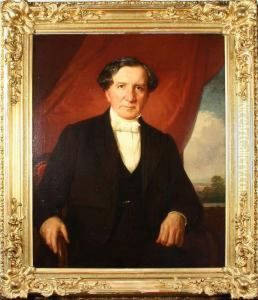Carl Theodor Staaf Paintings
Carl Theodor Staaf was a Swedish architect known for his contributions to the National Romantic style, which was part of a broader national romantic movement in Sweden at the turn of the 20th century. Born on August 5, 1861, in Göteborg, Sweden, Staaf's architectural education and career were deeply influenced by the cultural and historical context of his time, a period when national identity and heritage became focal points in art and architecture.
After completing his studies at the Chalmers University of Technology in Gothenburg, Staaf furthered his education at the Royal Institute of Technology in Stockholm. His career was marked by a dedication to incorporating traditional Swedish architectural elements with the functional needs of modern society. This approach was emblematic of the National Romantic style, which sought to reconcile the historical and modern aspects of architecture, creating buildings that were both functional and symbolic of national identity.
Throughout his career, Staaf designed a variety of buildings, including schools, churches, and residential buildings, many of which are still admired today for their unique blend of traditionalism and innovation. His works are characterized by the use of local materials, such as wood and brick, and often feature decorative details inspired by Swedish folk art and historical styles. Staaf's contributions to architecture were part of a larger movement that aimed to define a modern Swedish style that was rooted in the country's past, yet fully adapted to the needs of contemporary society.
Carl Theodor Staaf's legacy in Swedish architecture is significant, as his buildings stand as testaments to the National Romantic movement's ideals. His approach to design has influenced subsequent generations of architects who seek to balance historical reverence with modern functionality. Staaf passed away on May 30, 1915, in Stockholm, but his work continues to be celebrated for its role in shaping the architectural landscape of Sweden and for its contribution to the broader discourse on national identity and architectural heritage.



